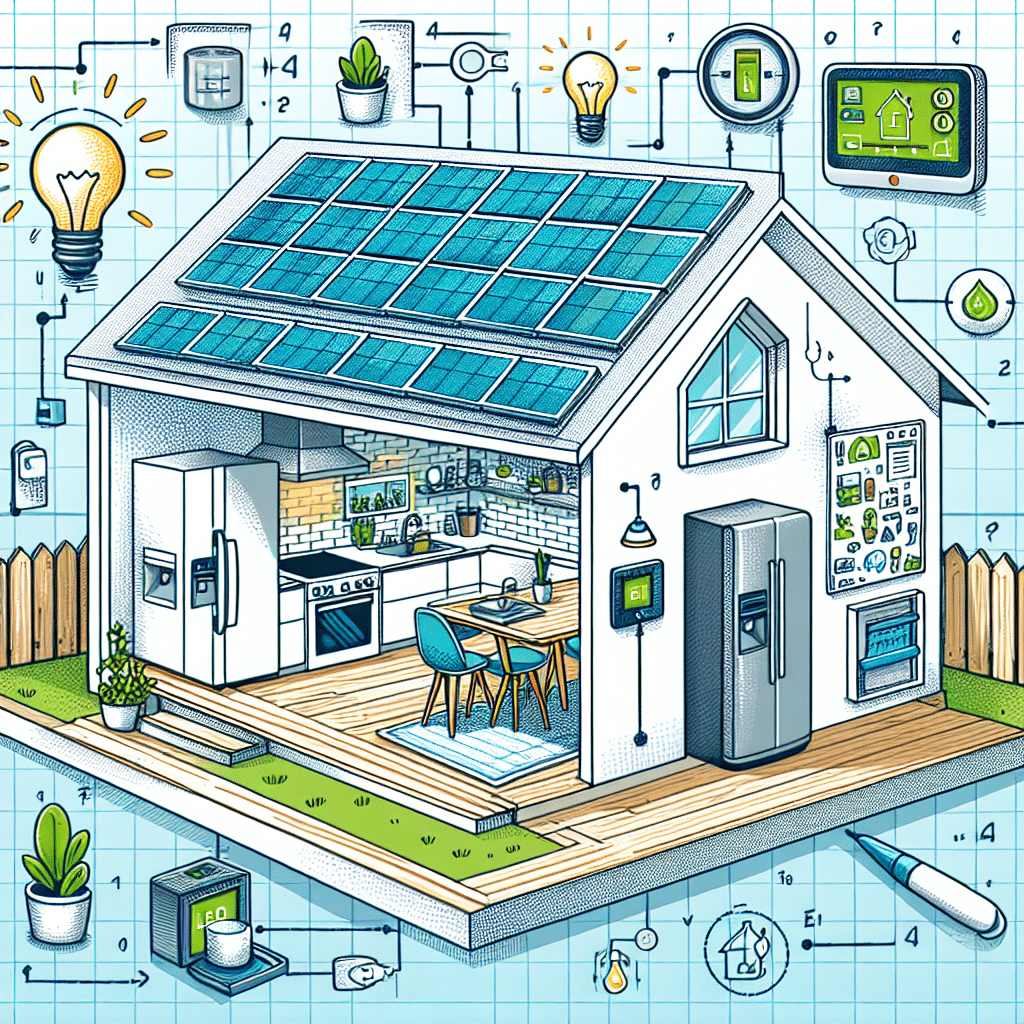Energy-Efficient Smart Thermostats
Smart thermostats are pivotal in automating home heating and cooling, thus helping reduce utility bills. Traditional thermostats require manual adjustments, often leading to energy waste. Smart thermostats, such as the Nest Learning Thermostat or Ecobee SmartThermostat, analyze your habits and autonomously adjust the temperature based on your preferences. They allow for remote access via smartphone apps, enabling users to control heating and cooling from anywhere. This feature is essential for ensuring that energy isn’t wasted when no one is home.
Smart Lighting Solutions
Switching to smart LED light bulbs can make a significant impact on your energy bills. Brands like Philips Hue and LIFX offer a vast range of color options and brightness levels, but their efficiency doesn’t stop at aesthetics. Smart bulbs use up to 80% less energy than traditional incandescent bulbs. Moreover, they can be programmed to turn off after a certain period or be dimmed according to the time of day. Integrating smart lighting systems with motion detectors allows lights to switch on and off automatically depending on occupancy, ensuring no energy is wasted.
Home Energy Monitors
Devices like Sense or Neurio provide real-time insights into your home’s energy usage. These energy monitors can track individual appliances and offer actionable tips to reduce unnecessary consumption. By identifying which devices draw the most power, homeowners can make informed decisions about where to cut back. They enable users to set energy goals, track performance over time, and even receive alerts for unusual energy spikes, allowing for proactive measures to lower bills.
Smart Plugs and Power Strips
Smart plugs, like those from TP-Link’s Kasa series or Wemo, allow users to monitor and control their appliances remotely. By using a smart plug, you can turn off devices that consume power even when not in use, known as phantom loads. Smart power strips enhance this functionality by managing multiple devices simultaneously. They often feature energy monitoring capabilities, making it easy to track savings and set schedules for devices like chargers, televisions, and small appliances that can be turned off when not needed.
Automatic Irrigation Systems
Smart irrigation controllers, such as Rachio or RainMachine, optimize water usage based on weather conditions and specific plant needs. These systems adjust watering schedules automatically, reducing excessive water consumption and, consequently, water bills. By using smartphone apps, homeowners can manually control their watering systems or set up automated schedules that align with the local climate, saving both time and precious resources.
Smart Appliances
Investing in smart appliances is another effective way to lower monthly bills. Modern smart refrigerators, dishwashers, and washing machines from brands like Samsung and LG come equipped with energy-efficient technologies. For instance, smart refrigerators use advanced insulation materials and energy-efficient compressors, consuming less power. Additionally, many smart appliances can be programmed to run during off-peak hours when electricity rates are lower, further contributing to bill reductions.
Smart Home Hubs
Incorporating a smart home hub like Amazon Echo or Google Nest Hub can significantly enhance the efficiency of all connected devices. These hubs allow central control over various smart gadgets by integrating all systems into one interface. This streamlined control can help ensure all energy-saving features are activated. For example, you can set routines where lights dim, the thermostat adjusts, and devices like televisions turn off at bedtime, promoting energy saving seamlessly.
Smart Shade and Blinds
Automated window coverings, such as Lutron Serena or IKEA FYRTUR, assist in regulating indoor temperatures by blocking out excess sunlight during hot weather or retaining warmth during colder months. Smart shades can be set to open and close on schedules or through a smartphone app, reducing the need for heating and cooling systems. By optimizing natural light, homeowners can decrease reliance on artificial lighting, further impacting energy bills positively.
Smart Security Systems
Advanced security systems, including smart cameras and motion sensors, can save on home insurance premiums while also providing energy management features. For instance, smart cameras can offer insights into unused areas of the home, highlighting opportunities for energy-saving measures. Additionally, some systems are linked to smart lighting and can turn on or off based on detected movement, reducing energy consumption while enhancing security.
Smart Water Heaters
Smart water heaters offer advanced control over energy consumption by heating water more efficiently. With models like Rheem’s EcoNet and the AO Smith Voltex, homeowners can set heating times according to peak usage, ensuring warm water is available without wasting energy when not needed. These systems often come with mobile apps that provide diagnostic information, alerting homeowners to maintenance needs and allowing remote monitoring.
Voice-Activated Energy Monitoring
Voice-activated devices like Amazon Alexa or Google Assistant can provide real-time updates on energy consumption and allow users to manage their appliances through voice commands. This convenience encourages users to be more mindful of their energy usage. For instance, you can easily ask your smart assistant to turn off lights or adjust the thermostat, making it easier to maintain energy efficiency while also saving time.
Community Energy Programs
Many utility companies offer incentive programs for adopting energy-efficient technologies. Participating in these community energy programs can reduce overall costs associated with purchasing smart gadgets. Programs may offer rebates for smart thermostats, home energy audits, or discounted rates for using energy during off-peak hours. Engaging with local utility providers and understanding available programs can facilitate major savings.
Conclusion
Smart home gadgets are a smart investment for those looking to cut down on utility bills efficiently. From optimized heating and cooling solutions to intelligent lighting systems, these devices not only offer comfort and convenience but also contribute significantly to lowering energy consumption. As the market for smart home technology continues to grow, so does the potential for innovative solutions that align convenience with energy efficiency. By embracing these advancements, homeowners can create sustainable living environments that not only save money but also benefit the planet.
